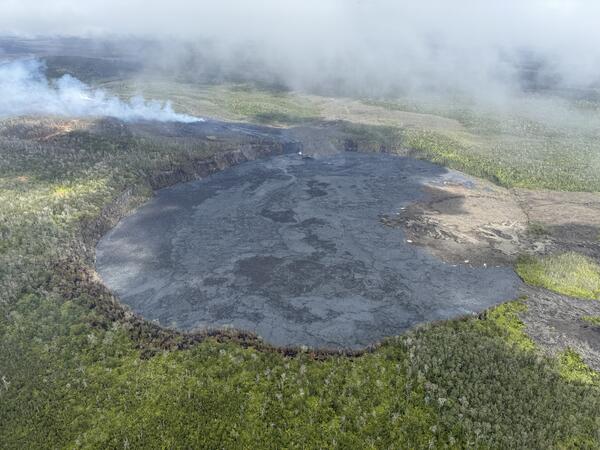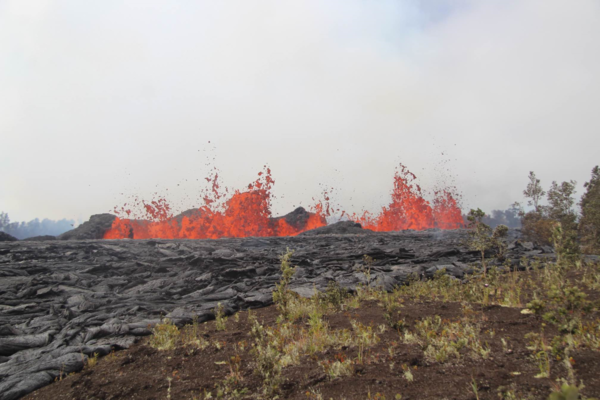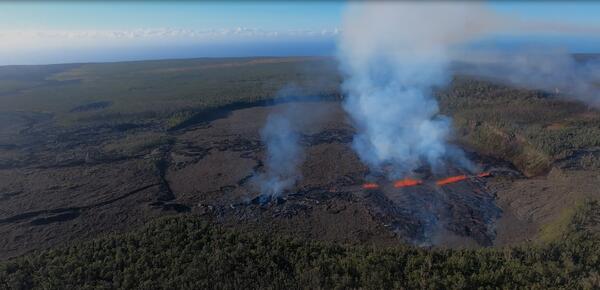December 24, 2024 - Video of lava fountains at Kīlauea summit
December 24, 2024 - Video of lava fountains at Kīlauea summitGlowing red lava fountains are continuing to erupt at Kīlauea summit this Christmas Eve. USGS Hawaiian Volcano Observatory scientists monitored the eruption from the caldera rim, measuring the lava fountain heights at approximately 75 meters (246 feet) during an afternoon monitoring fieldshift.
























